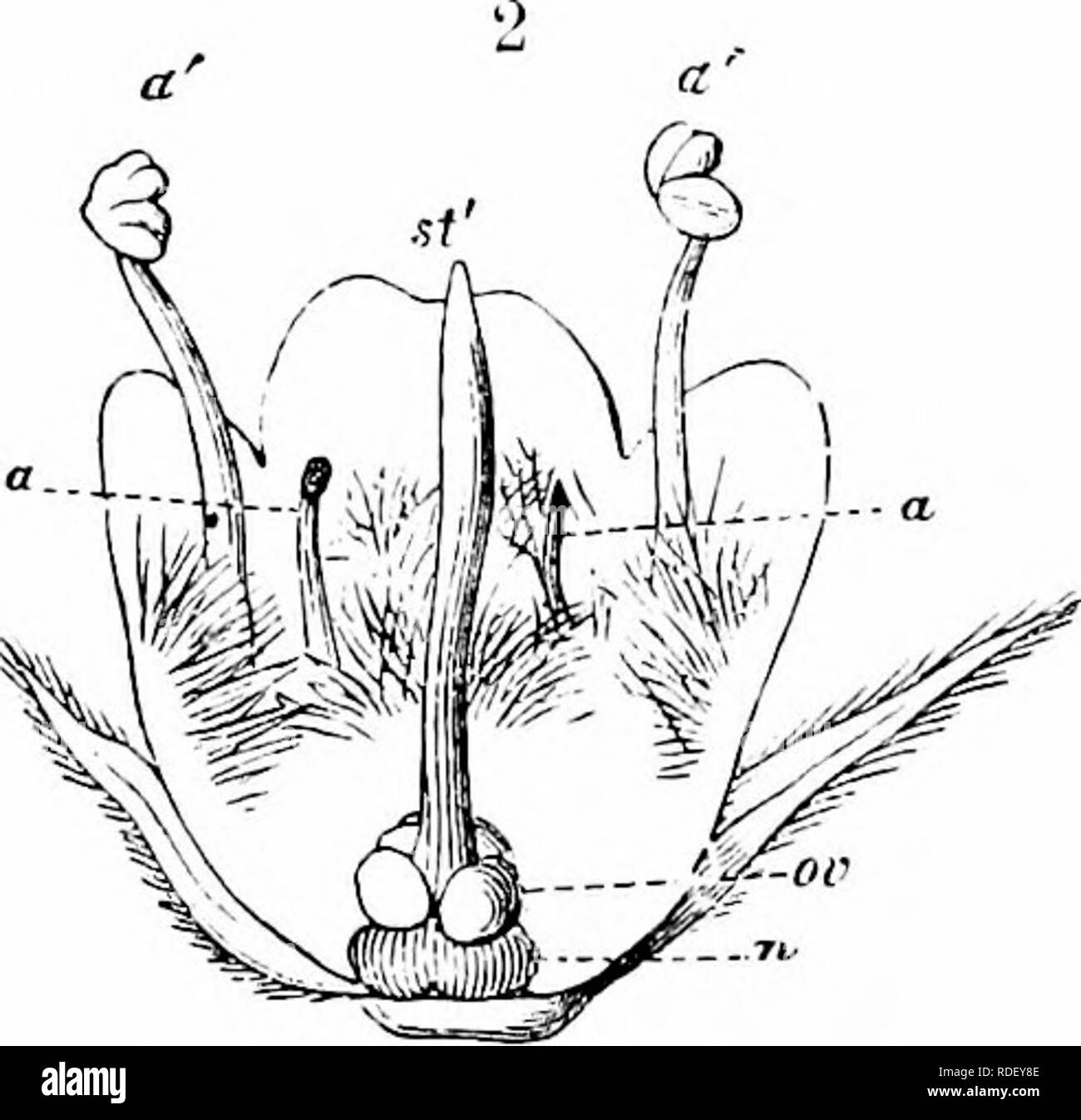. Handbook of flower pollination : based upon Hermann Mu?ller's work 'The fertilisation of flowers by insects' . Fertilization of plants. Fig. 22. Flowers wiih concealed nectar, (i) Trollius europaeus Z-. (2) Lycopus>uropaeus ^. (in outline), n. Nectary. when the petals are fully expanded in the sunshine. Although actinomorphous forms still predominate (e. g. species of Pulsatilla, Trollius, species of Geranium, Erodium, Cardamine pratensis, Cakile maritima, Malva, Rubus, Oxalis, Epilobium, Ribes, Lythrum, Sempervivum, Polemonium, Myosotis, Vaccinium, Calluna, Pyrola, Symphoricarpos, Allium

Image details
Contributor:
The Book Worm / Alamy Stock PhotoImage ID:
RDEY8EFile size:
7.1 MB (214.8 KB Compressed download)Releases:
Model - no | Property - noDo I need a release?Dimensions:
1607 x 1555 px | 27.2 x 26.3 cm | 10.7 x 10.4 inches | 150dpiMore information:
This image is a public domain image, which means either that copyright has expired in the image or the copyright holder has waived their copyright. Alamy charges you a fee for access to the high resolution copy of the image.
This image could have imperfections as it’s either historical or reportage.
. Handbook of flower pollination : based upon Hermann Mu?ller's work 'The fertilisation of flowers by insects' . Fertilization of plants. Fig. 22. Flowers wiih concealed nectar, (i) Trollius europaeus Z-. (2) Lycopus>uropaeus ^. (in outline), n. Nectary. when the petals are fully expanded in the sunshine. Although actinomorphous forms still predominate (e. g. species of Pulsatilla, Trollius, species of Geranium, Erodium, Cardamine pratensis, Cakile maritima, Malva, Rubus, Oxalis, Epilobium, Ribes, Lythrum, Sempervivum, Polemonium, Myosotis, Vaccinium, Calluna, Pyrola, Symphoricarpos, Allium, and others), this class of flowers also includes many species exhibiting more or less well-marked zygomorphism, this indicating a higher deo-ree of floral specialization (e. g. Veronica, Euphrasia, Scrophularia, Lycopus, Orchis Thymus, Mentha, Origanum, and others). White and yellow, colours which predominated in the two first classes of nectar flowers, scarcely appear at all in flowers with completely concealed nectar, but give place to reds, blues, and violets.. Please note that these images are extracted from scanned page images that may have been digitally enhanced for readability - coloration and appearance of these illustrations may not perfectly resemble the original work.. Knuth, Paul, 1854-1899; Knuth, Paul, 1854-1899; Mu?ller, Hermann, 1829-1883; Ainsworth Davis, J. R. (James Richard), 1861-1934. Oxford : Clarendon Press